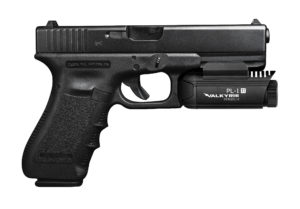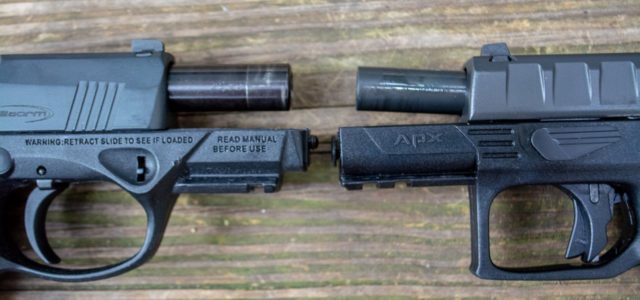Which Is Better? Tactical Flashlight Or Gun Light?
I came across this interesting article on the Beretta blog (blog.beretta.com) that discusses the differences between a tactical flashlight and a gun light, and goes into good detail on the pros and cons of both. Have a read and I’ve added a little opinion at the end.
 “It’s 8:20 on a summer’s evening as I type this, and twilight is starting to settle in over the small town in Florida where I live. My wife and I will go for a walk after I’m finished with this article. I’ll have a concealed carry pistol with me as I usually do, along with a mobile phone, some other stuff, and a powerful handheld “tactical” flashlight. I consider a small, powerful light to be an absolutely essential part of my everyday carry, and I’ve come to see the benefits of having a light on my firearm as well. Both are useful, and both have their roles for self-defense.
“It’s 8:20 on a summer’s evening as I type this, and twilight is starting to settle in over the small town in Florida where I live. My wife and I will go for a walk after I’m finished with this article. I’ll have a concealed carry pistol with me as I usually do, along with a mobile phone, some other stuff, and a powerful handheld “tactical” flashlight. I consider a small, powerful light to be an absolutely essential part of my everyday carry, and I’ve come to see the benefits of having a light on my firearm as well. Both are useful, and both have their roles for self-defense.
Why you want a flashlight
We as a species discovered early on that having an artificial light source was a really useful thing, so we invented the campfire to keep away predators at night. Campfires are big and bulky, though, so we quickly invented the burning branch to light up our way at night and to keep predators at bay as we moved from place to place.
And that’s precisely the role that the modern tactical flashlight performs. A bright handheld light (150 or more lumens) lets you see clearly at night inside and as well as outside. It also allows you to see and identify the people around you that might want to do you harm. More than that, though, they can also help defuse a dangerous situation before it happens and also be used as a less-lethal means of self-protection.
A bright flashlight can be used to defuse a situation before it happens because, in a crook’s world, there are two types of people who most often carry and use bright flashlights: police officers and security guards. Both spell trouble for our bad guy, and so when they spot a bright light outside at night, they know something very bad might be coming as well. A bright flashlight shined into the eyes of an attacker at night can also blind them for a brief time, giving you time to try something else, and this trick can work in …


